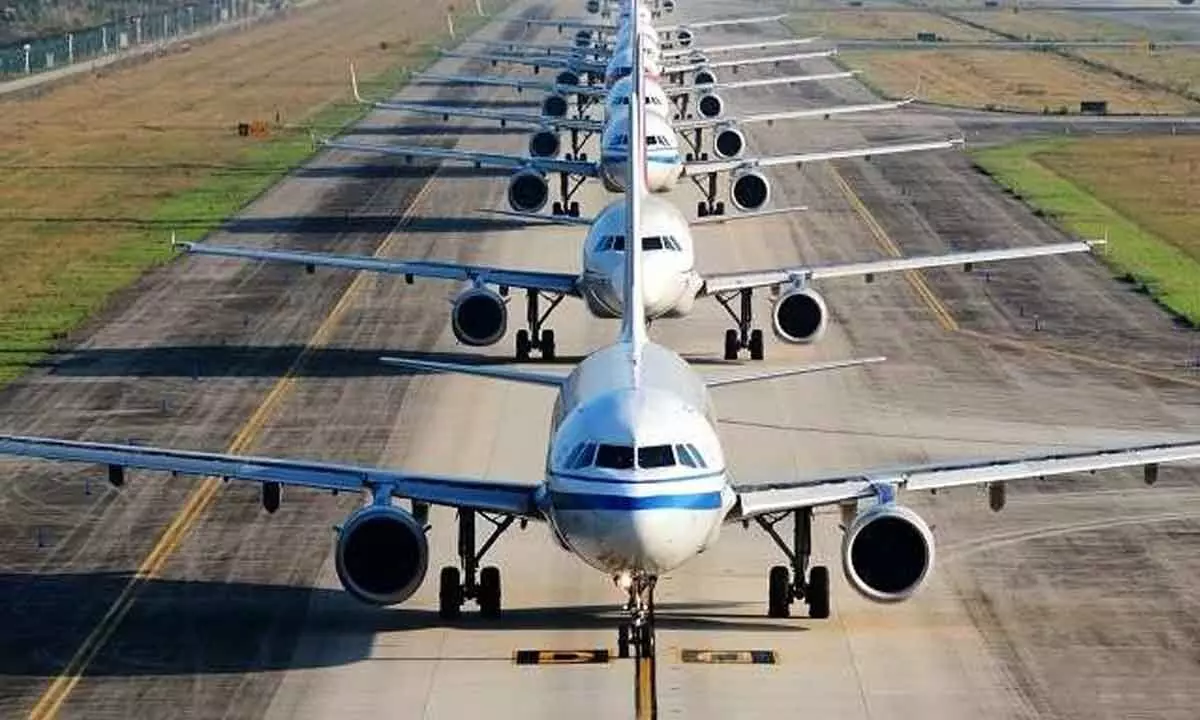Digital transforming vital for aviation industry
Technology ranging from 5G, AI/ML, and cloud has the potential to disrupt and transform the air transport journey, optimize operations systems, personalize the travel experience
image for illustrative purpose

Currently, digitalization is shaping all fields in a manner that is comparable to any other significant events that have positive influences in the economy. The airline industry is participating actively in digital innovation due to its cost structure, security dependence, and competition intensity, to improve customer experience and financial performance.
Across the globe, airports welcome about 4.5 billion travellers annually. According to a report from Airports Council International, the Covid-19 pandemic has hit the sector very hard with an estimated 60 per cent decrease in passenger traffic in 2020. Going forward, it is expected that the 'pre-Covid' numbers will recover as an annual growth rate of 3.7 per cent is predicted until 2040. Also, air cargo is foreseen to reach a 2.3 per cent annual growth rate. It in turn results in a considerable rise in flight movements to cater for that expansion.
"Successful collaboration and cooperation between air navigation service providers, airspace users, airports, regulators, manufacturing industry, and regional and global organizations are paramount for the sound development of air transport," says IATA (International Air Transport Association). Technology ranging from 5G connectivity, AI/ML, and the cloud strengthen collaboration across the aviation ecosystem. It has the potential to disrupt and transform the air transport journey, optimize operations systems, personalize the travel experience.
While the world is changing at a fast pace, the aviation industry must be prepared and ensure environmental, operational, and financial sustainability to be able to follow such transformations. Airports are re-visiting the way they operate to become safer, more viable, secure, and more efficient by adopting and implementing new technologies.
One way to do that is by deploying connected aircraft solutions. Another is leveraging technologies like augmented reality for automated airside operations to help maximize capacity and improve the on-time performance (OTP) of aircraft. Leveraging artificial intelligence in the aviation industry and digital twin solutions contributes to collaborative decision-making.
A robust digitalization push in the years leading up to the pandemic softened the worst effects and allowed SIA to quickly pivot. The airline, which has consistently ranked among the world's best airlines, knew creating a smoother customer experience would be vital to win back wary flyers.
SIA solutions include contactless options for customers, digitized means for health checks and vaccination requirements, and non-health-related digital upgrades, such as allowing travellers to control entertainment screens from their smartphones.
The airline's digitalization efforts have already made a significant impact on the airline, saving 5,00,000 staff hours, according to estimates.
In addition, innovation in technology and approaches (e.g. by redefining efficiencies in travel) are essential to redefining mobility. Cutting-edge technology, such as autonomous devices and ultra-light materials, creates opportunities to transform the mobility system by enabling new business models and mobility services. Innovations abound in aviation, e.g. unmanned aircraft innovations; artificial intelligence; biometrics; robotics; block chain; alternative fuels and electric aircraft. Aviation is therefore ideally positioned to support the innovation discourse and its potential impacts on new mobility.
The World Economic Forum proposes that the deployment of these private sector and government innovations to address mobility challenges can contribute to an improved mobility landscape – if they are deployed in a coordinated and collaborative way that aims to optimize the entire transport system. Unfortunately to date, these efforts in many instances may be exacerbating transport issues, most notably by adding congestion and complexity while also creating inefficiencies between public and private modes of transport.
Sharing and leveraging technology and best practices from aviation and all modes of transportation will help ensure the success and sustainability of the emerging mobility sector create trust by the public and become sustainable.
Within the 2030 Agenda framework, ICAO was identified as the custodian agency of the global indicator for Passenger and Freight Volumes, by Mode of Transport. ICAO monitors and provides data to measure the progress of States building resilient infrastructure, promoting inclusive and sustainable industrialization and fostering innovation.
The aviation sector is growing fast and will continue to grow. The most recent estimates suggest that demand for air transport will increase by an average of 4.3 per cent per annum over the next 20 years.
If this growth path is achieved by 2036 the air transport industry will then contribute 15.5 million in direct jobs and $1.5 trillion of GDP to the world economy. Once the impacts of global tourism are taken into account, these numbers could rise to 97.8 million jobs and $5.7 trillion in GDP.
By mid-2030s no fewer than 2,00,000 flights per day are expected to take off and land all over the world.

